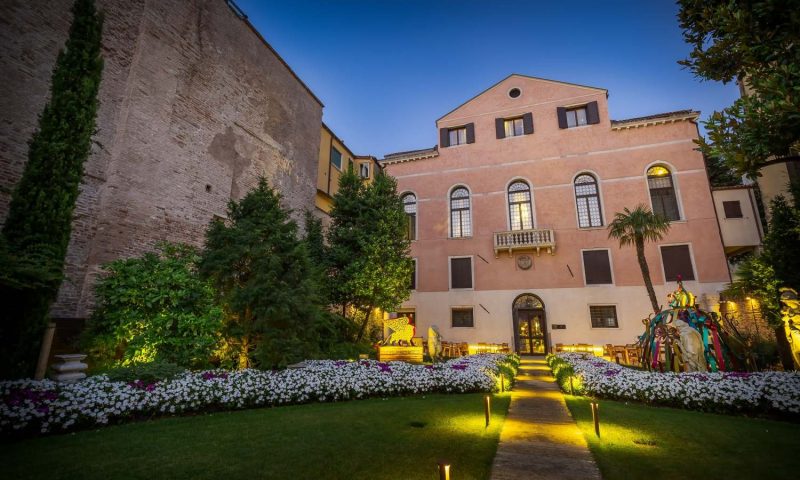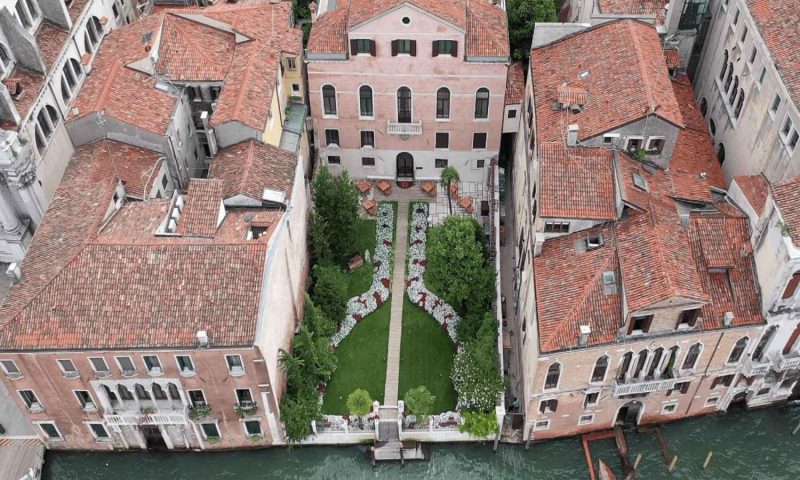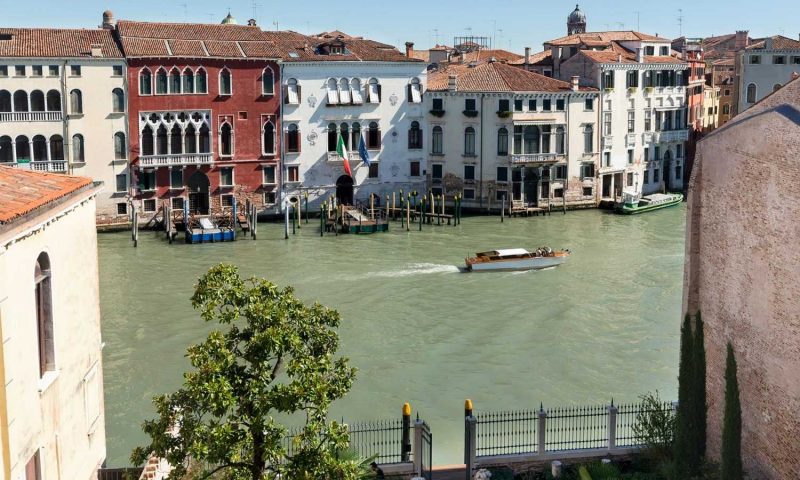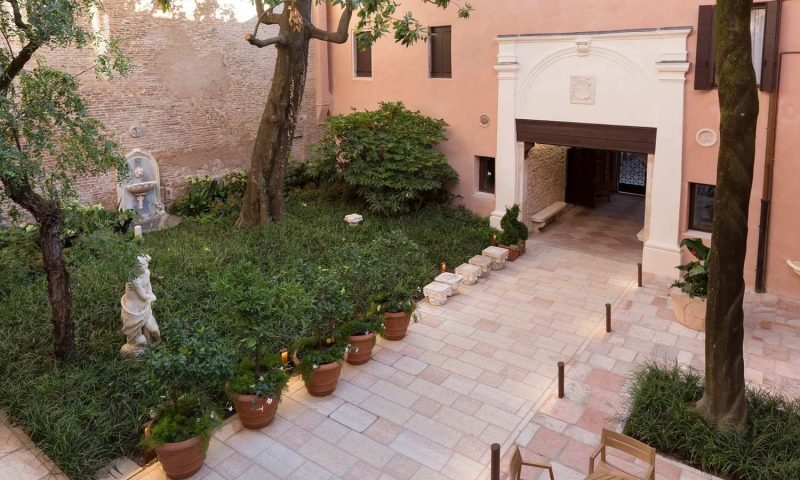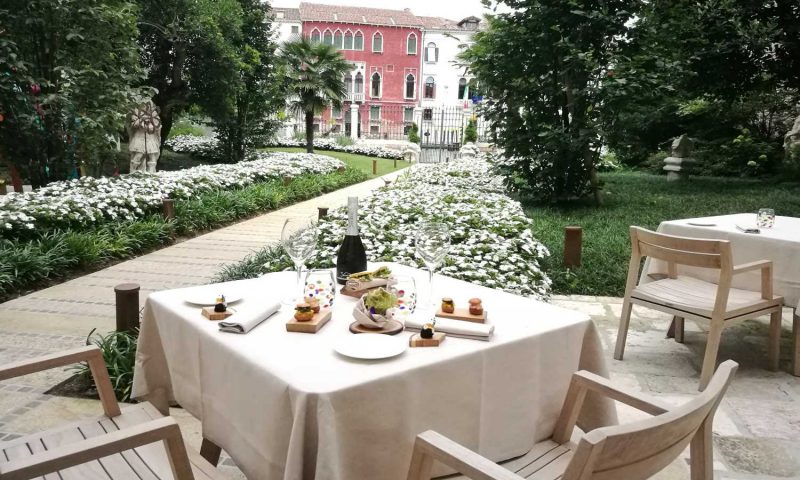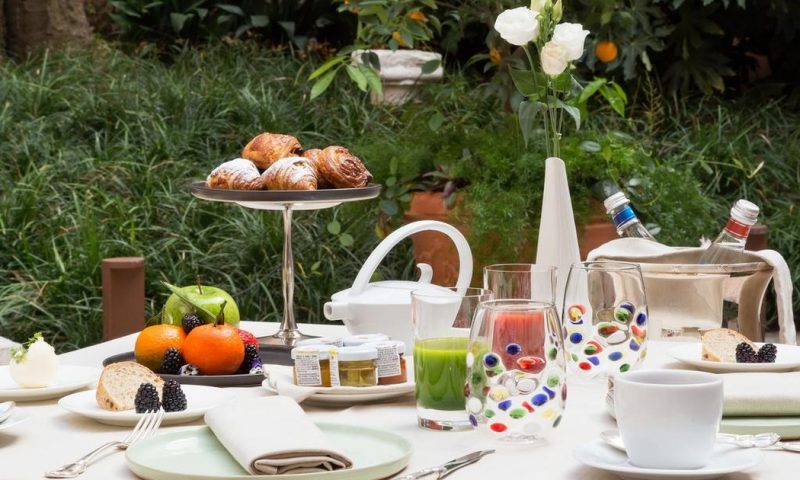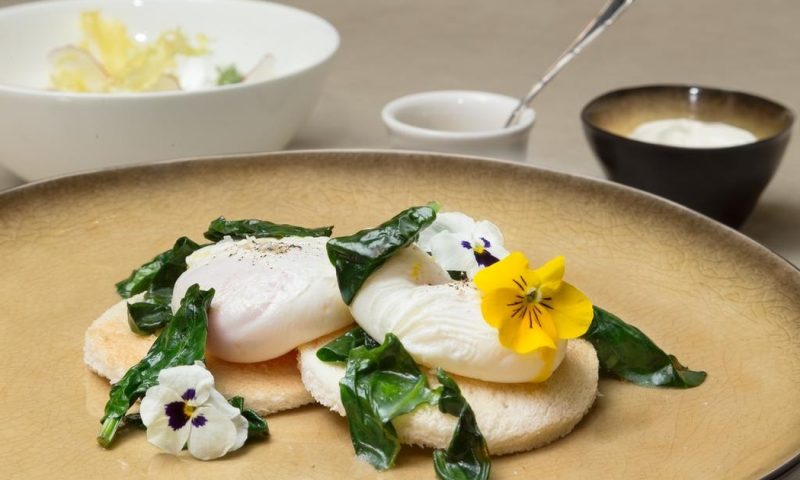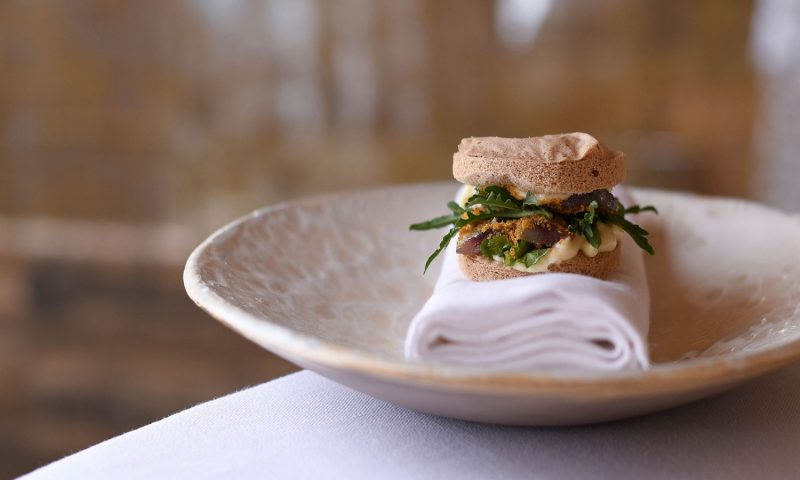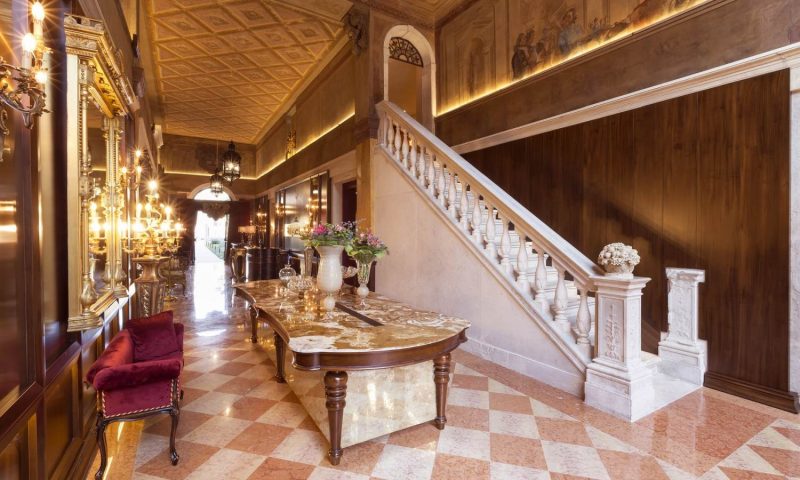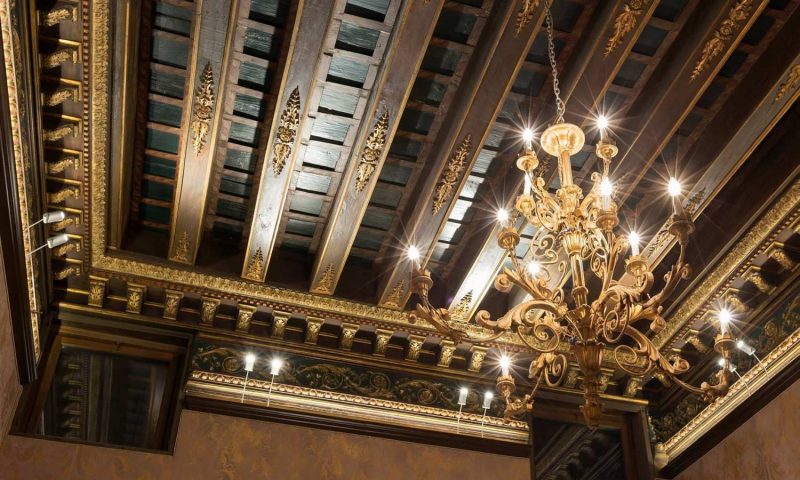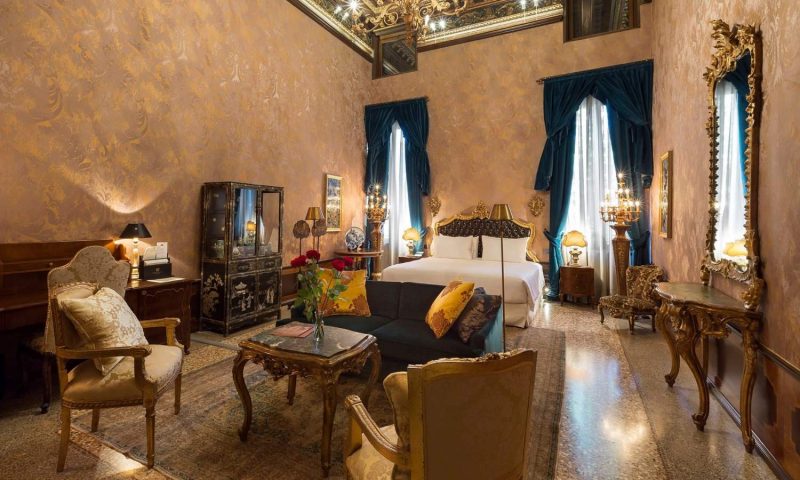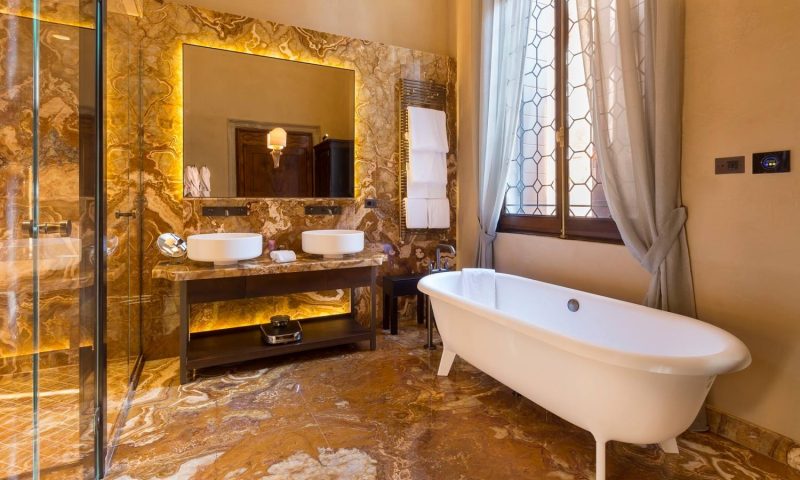After a sumptuous restoration, Palazzo Venart – a member of The Leading Hotels of the World – is now one of the most iconic 5-star hotels in Venice, a magical and secret place in the heart of the Sestiere Santa Croce, able to recount a story stretching back centuries and beginning when it was an ancient private residence, known as Palazzo Bacchini delle Palme.
The palace’s soul lies in its name, a combination of the words ‘Venice’ and ‘Art’, and it enshrines the charm and essence of the history of this city, an emblem of world art since the Renaissance.
Tucked away in the heart of the ‘city on water’ – 10 minutes from the Rialto Bridge and far from the classic tourist routes, Palazzo Venart houses priceless treasures such as the enchanting garden with a private pier on the Grand Canal and the Glam restaurant, the only one shining two Michelin stars in Venice.
THE HISTORY
Palazzo Bacchini delle Palme on the Grand Canal in Venice has regained its former splendour and timeless charm, after years of neglect and decay, thanks to a thorough restoration completed in 2016.
The palace, a tribute to the thousand-year history of Venice, has over time hosted some of the most illustrious personalities of the past and was the scene of the social and cultural life of the Venetian nobility.
In the fifteenth century, the building, formerly owned by the Lion family, then the Vernier family, was the home of the great mercenary captain Pandolfo Malatesta, lord of Rimini and patron of the arts, who took refuge here after being excommunicated and sentenced to be burnt at the stake for his excessive greed.
The palace in the past was also home to the luckless Francesco da Bussone, known as the Count of Carmagnola, accused of treason and executed between the two columns in St. Mark’s Square.
Originally, the front of the palace faced the Grand Canal, occupying the space that is now the garden. The structure of the palace was the typical Venetian tripartite architecture of the fifteenth century, with direct access from the canal and the white marble façade interspersed with arched windows, decorated with elegant balustrades in Istrian stone.
In the golden age of the eighteenth century, the salons on the piano nobile of the palace hosted the social and cultural life of the city’s aristocratic elite, who, to the notes of Vivaldi played by string quartets, gathered to dance, play cards and converse.
Throughout the centuries, the building has always been one of the most exclusive and spectacular in the city, so much so that in 1819 it even appeared in the tourist guidebook entitled ‘Forestiero Istruito nelle cose più pregevoli e curiose antiche e moderne della città di Venezia’ (translated, the title means ‘For foreigners that they may learn of the most splendid and curious ancient and modern things of the city of Venice’).
However, in a fire that broke out in in 1845, the façade of the palace facing the Grand Canal was destroyed, leaving space for the current ‘garden on the water’, while the salon and the portion of the building that housed the casinò were saved.
The reconstruction of the building took more than a decade: in the first phase, starting in 1851, the damaged and unsafe areas were secured and structural works were completed, while from 1864 the spaces were redefined and the decorative elements completed.
Further restoration work was carried out in 1880, during the period when the palace was owned by Amelia Richetti, who received it as an inheritance from her husband along with other historic Venetian buildings. These properties included a residence in San Stae and an estate in Altino, an ancient pre-Roman city that is now no more.
Her daughter Adele married Lieutenant-Colonel Edmondo Bacchini delle Palme, to whom we owe the coat of arms in the salon – the symbols of which recall the close ties between the family and the Church of Rome – and the name of the palace as it has come down to us.
The tempera paintings adorning the walls and ceilings of the corridor, which we still admire today, date back to the time when the building was completely restored. The frescoes recall the essence of the frescoes painted by Michelangelo Mortalier in Palazzo Grassi and show convivial scenes from Venetian society of the time, bearing witness to the fervour of palace life.
The scenes, painted to be admired from below and from a distance, are thought to have been created after the steps that connected the two wings of the mezzanine above the marble staircase were removed.
Analysis of the surveys conducted during the restoration revealed that many of the pigments used in the paintings, such as zinc white, artificial ultramarine blue and chrome yellow, as well as inorganic binders made from a combination of carbonated lime and plaster, were not used at the time and instead date back to the second half of the nineteenth century.
The imposing and meticulous renovation of the ancient palace completed in 2016, aimed at preserving every indelible trace of the transformations it has undergone over the centuries, has restored to their former glory the ceiling and wall decorations in the corridor, the wooden beams painted with gold leaf, the Renaissance frescoes, and the stone architectural elements, such as the precious marble staircase leading to the mezzanine floor and the Istrian stone portal on the main floor.
Instead, the restoration of the area destroyed by fire in front of the Grand Canal – where the original Palazzo Vitturi Giustinian-Contarini stood – dates back to the twentieth century and was later replaced by an enchanting and intimate garden, embellished with statues and works of art, partly kept in the demolished building and partly coming from the Roman archaeological site of Altino.
In the following years, Bacchini delle Palme donated part of the collection to the Museum of Altino, where some works are still preserved, while others were left to decorate the garden, giving it the typical charm of a place rich in history.
In August 2016, the Taiwanese hotel group LDC Hotels Italy completed the restoration work and the palazzo was renamed Palazzo Venart – Luxury Hotel, now an elegant and exclusive five-star hotel, one of the most sought-after in Venice.
ROOMS & SUITES
There are seventeen charming rooms and luxury suites, each different, in this magnificent boutique hotel in Venice. Each one reflects the city’s noble history through fine furnishings and luxurious details that elegantly reinterpret the fancifulness of the gilded eighteenth century.
The opulent interior pays tribute to travellers, poets, works of art and ancient traditions, elegantly combining modern comforts with the timeless charm of Venice, ‘Queen of the Adriatic’.
LUXURY SUITE OPEN PLAN GRAND CANAL
An especially striking feature of this wonderful Open Plan Suite with its generous dimensions and meticulously decorated rooms is its enchanting view of the Grand Canal – the main ‘street’ through the city and the most famous waterway in the world.
The calm and reassuring sounds of the Grand Canal will be the soundtrack of your stay in this magnificent Suite, made unique by the view of the façades of the most beautiful residences of the past. Vermilion red onyx and glass mosaic clad the bathroom with natural light, large walk-in shower, double washbasin and luxury toiletries.
SUITE GRAN CANAL
Located on the upper floors of the palace, the Grand Canal Suite with view is composed of generous and functional spaces, decorated with fine handcrafted boiseries and decorated in a delicate pastel palette.
The room is divided into a living area, a master bedroom and a refined bathroom panelled in onyx; but it is the evocative view of the lagoon, with the bright colours of the period palaces and the magic of its lights at night that gives this prestigious suite type its special touch.
PRESTIGE ROOM
The four Prestige rooms, one of which has a splendid view of the Grand Canal, have striking features that give them a timeless charm. Each room is designed with unique combinations of classic design elements and embellished with period furniture, objets d’art and fine finishes.
The Prestige room, which is larger and of a higher category than the Classic rooms, measures an average of 35 square metres (376 sq.ft.) and features a king-size or twin bed and a spacious marble bathroom with luxury toiletries by Etro Palais Jamais.
GLAM RESTAURANT
The Glam restaurant – the only one with two Michelin stars in Venice – welcomes its guests in an intimate and atmospheric setting that includes a comfortable glazed indoor dining room and the lovely courtyard outside in the shade of an old magnolia tree.
Here begins an auteur culinary experience – signed by multi-starred chef Enrico Bartolini and Resident Chef Donato Ascani – that revisits the traditional flavours of the Lagoon in a contemporary key, emphasising the quality of seasonal ingredients and the wide selection of fine labels.
The Glam restaurant creates a memorable experience of incredible value, tantalising the palates of connoisseurs from all over the world, combining the intense flavours of tradition with refined technique and the extraordinary talent of Chef Ascani.
WEDDINGS IN VENICE
A palace for events or an evocative location for weddings in Venice, stepping through the majestic door of Palazzo Venart will in any case introduce you to an exotic and exclusive world, a timeless place amid the dense weave of calli and campielli that are reflected in the lagoon.
Preceded by an enchanting garden lapped by the Grand Canal, Palazzo Venart will welcome your guests with an elegant expanse of colourful flowers and precious works of art by Anna Paola Cibin.
This enchanted and spending venue place thus becomes the ideal setting for a wedding ceremony, a toast at sunset or a spectacular cake-cutting ceremony sparkling with the reflections of the lights on the water.
Impeccable service, privacy and intimacy, customised arrangements and an extraordinary culinary proposal will make your every event a unique and memorable experience.
LIVIN’ VENICE
Discovering Venice at its most authentic and unusual, through the quietness of private views, hidden itineraries and exclusive experiences, is a luxury in itself. Be inspired by the secrets of the precious arts and ancient Venetian traditions of the Serenissima’s glorious past.
LUIGI BEVILACQUA WEAVING MILL
In the historical premises of the ‘Tessitura’ in the S. Croce district of Venice, the company – run since 1500 by the Bevilacqua family – still produces precious fabrics by hand using the ancient Venetian manner of weaving, combining historical techniques and designs with a modern touch.
Behind Bevilacqua velvets lies a history of know-how and patience handed down over the centuries on original eighteenth-century Jacquard looms and machinery, which still make products that are unique in the world, the fruit of a noble tradition carried on by very few weavers in the world.
On offer is an exclusive tour to discover a very ancient art and the refined soprarizzo velvet, the manufacture of which is extremely complex and is still done by hand on eighteen looms dating back to the eighteenth century, acquired from the silk school of the Serenissima.
TOUR OF BURANO & MURANO
One cannot say one has visited Venice without first losing oneself in the hidden calli, amidst the colourful houses and small canals of Murano and Burano, the most famous and characteristic islands of the Lagoon.
An exclusive tour by private boat will lead you to discover the treasures and centuries-old traditions that animate these places frozen in time, where ancient and precious arts have been handed down for generations. In the craft workshops of Murano, a universal synonym for the finest glassmaking art, wonderful works of art and iconic design objects in blown glass come to life.
It is, however, in Burano, one of the most colourful little towns in the world, that the skilled hands of the local embroiderers create lace with unique and refined weaves, which in the past adorned the most prestigious residences in Europe.
Be enchanted by the bright colours of the typical houses lapped by the emerald water of the canals and the lively, festive voices of the fishermen at the local market.
HANDCRADTED CONSTRUCTION OF GONDOLAS
Gondolas, those curvy boats that are the symbol of Venice, are still handcrafted in one of the most picturesque and untouched corners of Venice, the Squero San Trovaso in the historic Dorsoduro district.
One of the few boatyards still in activity and a true Italian excellence, this Venetian workshop has been building and repairing gondolas and small rowing boats since 1600, using ancient tools and techniques handed down over the centuries.
A visit to the Squero, as a slipway and boatyard is called here, provides an exciting leap back in time to the places that safeguard the ancient art of the shipwright, known as squerariol, who will show you techniques and stories of construction that have remained unchanged for centuries.
The tour ends with an aperitif in the traditional bacari of Campo Santa Margherita, the beating heart of Venice’s lively movida.
TOUR OF THE SERENISSIMA
A private or small group tour with an unusual concept that will allow you to discover the most interesting Venetian sights, but also its most hidden corners, legends, anecdotes and the magical allure that surrounds the events and extravagant characters that have made it unique in the world.
Immerse yourself in the dense web of calli and canals as you discover the Rialto market, the timeless Piazza San Marco and the Doge’s Palace or the Fondaco dei Tedeschi with its luxury shops and end your city tour with a spritz in the traditional bacari in the charming Campo dell’Erbaria.
